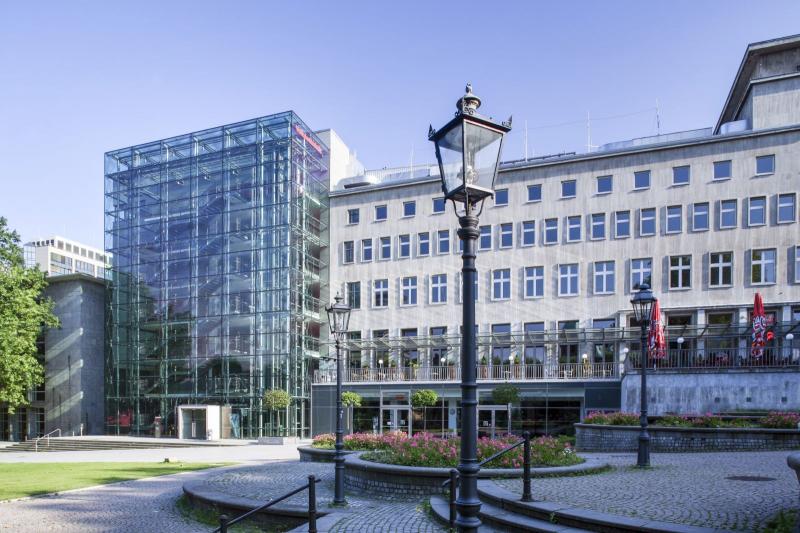Kettwiger Straße, 45127 Essen
Icon legend
![]() This icon indicates an awarded building
This icon indicates an awarded building
![]() This icon indicates a listed building
This icon indicates a listed building
![]() Projects with this logo are on the UNESCO World Cultural Heritage list
Projects with this logo are on the UNESCO World Cultural Heritage list
![]() Project has been converted, renovated or extended
Project has been converted, renovated or extended
x close
![]()
![]()
vor 1000 / 1275-1316
Pre-Romanesque
Romanesque
Gothic
Äbtissinnen Mathilde II, Theophanu, Bertha von Arnsberg, Beatrix von Holte
Advanced search with more criteria
Total projects: 483

45127 Essen
Distance: 0.10 km
Today’s Essen cathedral goes back a long way. As early as about 870, a three-nave basilica had been erected here, partially replaced by a new building about 960. The octagonal westwork and the crypt were integrated into the new church and are extant. This new church was built after a fire in 1275 and forms the basic foundation of today’s cathedral. The Gothic hall church was built on the initiative of the abbesses Bertha von Arnsberg and Beatrix von Holten under the direction of Meister Martin.
Originally the cathedral was the collegiate church “Münster am Hellweg“ and only in 1958 when the bishopric of Essen was established did it gain the status of a cathedral. In the same year, in memory of the foundation the artist Elmar Hillebrand shaped an altar in which the relics of the bishops of the parent bishoprics were inserted.
The Gothic church made of light sandstone was “made baroque” in the 18th century, both the facade and the roof and the interior. However, in 1880 it was “made Gothic” again, re-acquiring its original design. The interior in particular was also complemented with neo-Gothic works of art.
After WWII, parts of the building had to be rebuilt. Certain parts were heavily damaged, while the octagonal westwork and the crypt from about 960 were more or less undamaged. Today, the cathedral is 90m long, about 30m wide and at its highest point 50m tall.
Author: Dr. Ina Germes-Dohmen / Editorial staff baukunst-nrw
Text last changed on 12.03.2024
Categories:
Architecture » Public Buildings » Religious